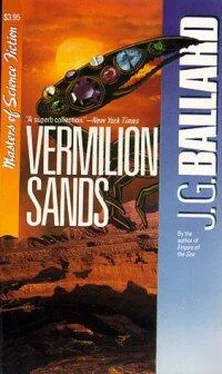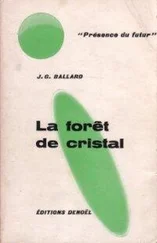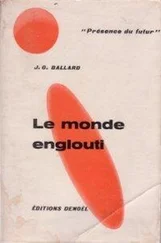James Ballard - Vermilion Sands
Здесь есть возможность читать онлайн «James Ballard - Vermilion Sands» весь текст электронной книги совершенно бесплатно (целиком полную версию без сокращений). В некоторых случаях можно слушать аудио, скачать через торрент в формате fb2 и присутствует краткое содержание. Жанр: Фантастика и фэнтези, на английском языке. Описание произведения, (предисловие) а так же отзывы посетителей доступны на портале библиотеки ЛибКат.
- Название:Vermilion Sands
- Автор:
- Жанр:
- Год:неизвестен
- ISBN:нет данных
- Рейтинг книги:4 / 5. Голосов: 1
-
Избранное:Добавить в избранное
- Отзывы:
-
Ваша оценка:
- 80
- 1
- 2
- 3
- 4
- 5
Vermilion Sands: краткое содержание, описание и аннотация
Предлагаем к чтению аннотацию, описание, краткое содержание или предисловие (зависит от того, что написал сам автор книги «Vermilion Sands»). Если вы не нашли необходимую информацию о книге — напишите в комментариях, мы постараемся отыскать её.
Vermilion Sands — читать онлайн бесплатно полную книгу (весь текст) целиком
Ниже представлен текст книги, разбитый по страницам. Система сохранения места последней прочитанной страницы, позволяет с удобством читать онлайн бесплатно книгу «Vermilion Sands», без необходимости каждый раз заново искать на чём Вы остановились. Поставьте закладку, и сможете в любой момент перейти на страницу, на которой закончили чтение.
Интервал:
Закладка:
VERMILION SANDS
BY J. G. BALLARD
Preface
Vermilion Sands is my guess at what the future will actually be like. It is a curious paradox that almost all science fiction, however far removed in time and space, is really about the present day. Very few attempts have been made to visualize a unique and self-contained future that offers no warnings to us. Perhaps because of this cautionary tone, so many of science fiction’s notional futures are zones of unrelieved grimness. Even its heavens are like other people’s hells.
By contrast, Vermilion Sands is a place where I would be happy to live. I once described this overlit desert resort as an exotic suburb of my mind, and something about the word ‘suburb’ – which I then used pejoratively – now convinces me that I was on the right track in my pursuit of the day after tomorrow. As the countryside vanishes under a top-dressing of chemicals, and as cities provide little more than an urban context for traffic intersections, the suburbs are at last coming into their own. The skies are larger, the air more generous, the clock less urgent. Vermilion Sands has more than its full share of dreams and illusions, fears and fantasies, but the frame for them is less confining. I like to think, too, that it celebrates the neglected virtues of the glossy, lurid and bizarre.
Where is Vermilion Sands? I suppose its spiritual home lies somewhere between Arizona and Ipanema Beach, but in recent years I have been delighted to see it popping up elsewhere – above all, in sections of the 3,000-mile-long linear city that stretches from Gibraltar to Glyfada Beach along the northern shores of the Mediterranean, and where each summer Europe lies on its back in the sun. That posture, of course, is the hallmark of Vermilion Sands and, I hope, of the future – not merely that no-one has to work, but that work is the ultimate play, and play the ultimate work.
The earliest of these tales, ‘Prima Belladonna’, was the first short story I published, seventeen years ago, and the image of this desert resort has remained remarkably constant ever since. I wait optimistically for it to take concrete shape around me.
J. G. BALLARD
The Cloud-Sculptors of Coral D
All summer the cloud-sculptors would come from Vermilion Sands and sail their painted gliders above the coral towers that rose like white pagodas beside the highway to Lagoon West. The tallest of the towers was Coral D, and here the rising air above the sand-reefs was topped by swan-like clumps of fair-weather cumulus. Lifted on the shoulders of the air above the crown of Coral D, we would carve seahorses and unicorns, the portraits of presidents and film stars, lizards and exotic birds. As the crowd watched from their cars, a cool rain would fall on to the dusty roofs, weeping from the sculptured clouds as they sailed across the desert floor towards the sun.
Of all the cloud-sculptures we were to carve, the strangest were the portraits of Leonora Chanel. As I look back to that afternoon last summer when she first came in her white limousine to watch the cloud-sculptors of Coral D, I know we barely realized how seriously this beautiful but insane woman regarded the sculptures floating above her in that calm sky. Later her portraits, carved in the whirlwind, were to weep their storm-rain upon the corpses of their sculptors.
I had arrived in Vermilion Sands three months earlier. A retired pilot, I was painfully coming to terms with a broken leg and the prospect of never flying again. Driving into the desert one day, I stopped near the coral towers on the highway to Lagoon West. As I gazed at these immense pagodas stranded on the floor of this fossil sea, I heard music coming from a sand-reef two hundred yards away. Swinging on my crutches across the sliding sand, I found a shallow basin among the dunes where sonic statues had run to seed beside a ruined studio. The owner had gone, abandoning the hangar-like building to the sand-rays and the desert, and on some half-formed impulse I began to drive out each afternoon. From the lathes and joists left behind I built my first giant kites and, later, gliders with cockpits. Tethered by their cables, they would hang above me in the afternoon air like amiable ciphers.
One evening, as I wound the gliders down on to the winch, a sudden gale rose over the crest of Coral D. While I grappled with the whirling handle, trying to anchor my crutches in the sand, two figures approached across the desert floor. One was a small hunchback with a child’s over-lit eyes and a deformed jaw twisted like an anchor barb to one side. He scuttled over to the winch and wound the tattered gliders towards the ground, his powerful shoulders pushing me aside. He helped me on to my crutch and peered into the hangar. Here my most ambitious glider to date, no longer a kite but a sail-plane with elevators and control lines, was taking shape on the bench.
He spread a large hand over his chest. ‘Petit Manuel – acrobat and weight-lifter. Nolan!’ he bellowed. ‘Look at this!’ His companion was squatting by the sonic statues, twisting their helixes so that their voices became more resonant. ‘Nolan’s an artist,’ the hunchback confided to me. ‘He’ll build you gliders like condors.’
The tall man was wandering among the gliders, touching their wings with a sculptor’s hand. His morose eyes were set in a face like a bored boxer’s. He glanced at the plaster on my leg and my faded flying-jacket, and gestured at the gliders. ‘You’ve given cockpits to them, major.’ The remark contained a complete understanding of my motives. He pointed to the coral towers rising above us into the evening sky. ‘With silver iodide we could carve the clouds.’
The hunchback nodded encouragingly to me, his eyes lit by an astronomy of dreams.
So were formed the cloud-sculptors of Coral D. Although I considered myself one of them, I never flew the gliders, but taught Nolan and little Manuel to fly, and later, when he joined us, Charles Van Eyck. Nolan had found this blond-haired pirate of the café terraces in Vermilion Sands, a laconic Teuton with hard eyes and a weak mouth, and brought him out to Coral D when the season ended and the well-to-do tourists and their nubile daughters returned to Red Beach. ‘Major Parker – Charles Van Eyck. He’s a headhunter,’ Noland commented with cold humour, ‘– maidenheads.’ Despite their uneasy rivalry I realized that Van Eyck would give our group a useful dimension of glamour.
From the first I suspected that the studio in the desert was Nolan’s, and that we were all serving some private whim of this dark-haired solitary. At the time, however, I was more concerned with teaching them to fly – first on cable, mastering the updraughts that swept the stunted turret of Coral A, smallest of the towers, then the steeper slopes of B and C, and finally the powerful currents of Coral D. Late one afternoon, when I began to wind them in, Nolan cut away his line. The glider plummeted on to its back, diving down to impale itself on the rock spires. I flung myself to the ground as the cable whipped across my car, shattering the windshield. When I looked up, Nolan was soaring high in the tinted air above Coral D. The wind, guardian of the coral towers, carried him through the islands of cumulus that veiled the evening light.
As I ran to the winch the second cable went, and little Manuel swerved away to join Nolan. Ugly crab on the ground, in the air the hunchback became a bird with immense wings, outflying both Nolan and Van Eyck. I watched them as they circled the coral towers, and then swept down together over the desert floor, stirring the sand-rays into soot-like clouds. Petit Manuel was jubilant. He strutted around me like a pocket Napoleon, contemptuous of my broken leg, scooping up hand-fuls of broken glass and tossing them over his head like bouquets to the air.
Читать дальшеИнтервал:
Закладка:
Похожие книги на «Vermilion Sands»
Представляем Вашему вниманию похожие книги на «Vermilion Sands» списком для выбора. Мы отобрали схожую по названию и смыслу литературу в надежде предоставить читателям больше вариантов отыскать новые, интересные, ещё непрочитанные произведения.
Обсуждение, отзывы о книге «Vermilion Sands» и просто собственные мнения читателей. Оставьте ваши комментарии, напишите, что Вы думаете о произведении, его смысле или главных героях. Укажите что конкретно понравилось, а что нет, и почему Вы так считаете.






